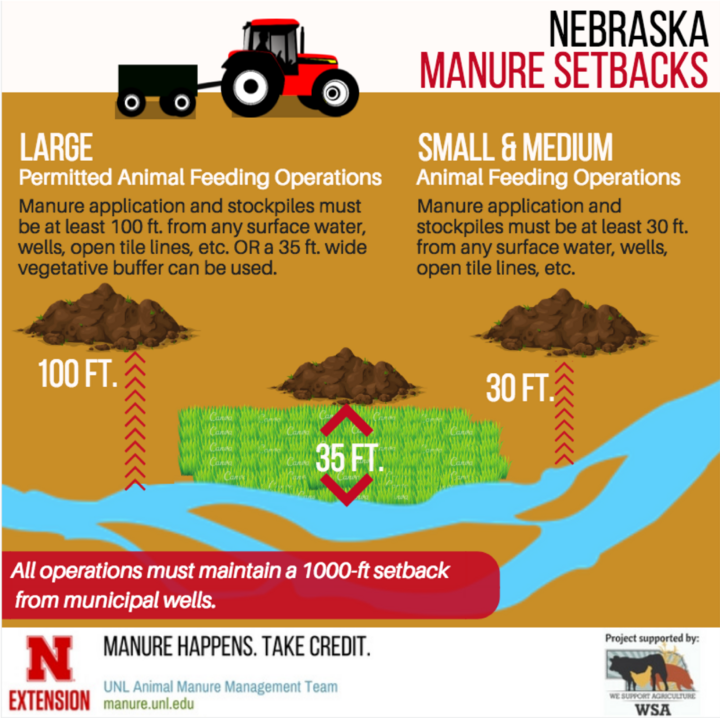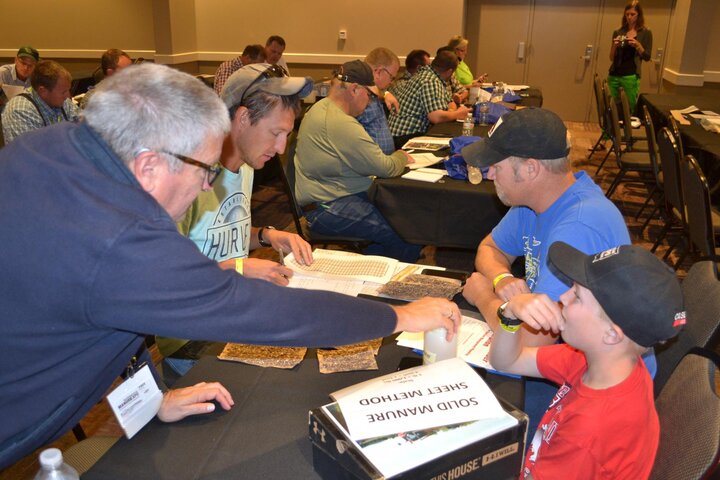Manure and Me: 10 Years of Amazing Changes
Land Application Training events are coming up in February. While planning the “new and improved” events over the last several weeks, one of my “Facebook memories” reminded me that I have been planning manure-related events for 10 years now. Wow! How did that happen? In that historical post, I expressed concern about not have any real program planning experience and questioned my manure knowledge beyond running the honey wagon on my family’s hog farm that no longer existed. Ten years later, things have changed. Social media has evolved, and I definitely have gained experience. I have learned tons (pun intended) about manure, and planning the annual UNL Land Application Training events is much easier than it used to be.
Most often, these land application training programs are primarily attended by livestock owners or employees, but anyone who uses manure for crop production will find useful information in the program.While many livestock farms are required to attend due to their permit, even those that do not have a this requirement often participate and gain a lot of knowledge to better their farms. All are welcome.

Training Topics
Ten years in this role means that I have probably communicated with nearly every livestock operation in Nebraska that is required to take manure management training, many of them more than once. I find that stunning. However, having the an audience that attends every five years means they’ve probably heard it all before, and likely more than once. Since the audience doesn’t change a lot, the program must. While many of the training topics remain the same, the UNL animal manure management (AMM) team continues to improve the events by refining teaching methods to better engage participants and involving new presenters. Topics covered include manure regulations, soil and manure sampling, setback requirements for manure storage and application (see image above), the value of manure to crops and soil, and manure spreader calibration, among others. While livestock producers were the original audience for these events, we continue to make it more applicable to crop producers who might want to learn how to responsibly use manure as part of their crop fertility plan.
Manure Application in Connecticut vs. Nebraska
I recently learned that the University of Connecticut has had a program in place for several years whereby they loan a manure spreader to farmers. It is equipped with a scale and datalogger to record application rates, which are then compared to rates farmers thought they were applying. While the farmers were aware that their information was being recorded, they were not asked to change their normal practices. The demonstration revealed that 95% of the manured acres received different application rates than what the farmers thought they were applying, with most being over-applied. With proper calibration to know accurate application rates, nutrients are spread over land where they can be utilized by the crops most efficiently, thus increasing the value of the manure and decreasing hauling costs as compared to application that rates that exceed crop needs. The UNL AMM team has advocated manure spreader calibration in training programs since the early 2000s. It is one of the original topics that I learned about when I began working with the manure team. So are farmers in Nebraska doing a better job? I believe so.
Hands-On Activities (without the odor)

| Date | Location |
| February 5, 2019 | Box Butte County Extension Office |
| February 6, 2019 | Holt County Extension Office |
| February 7, 2019 | Nebraska College of Technical Agriculture |
| February 20, 2019 | Nielsen Community Center in West Point East Meeting Rooms |
| February 20, 2019 | Dawson County Extension Office |
| February 21, 2019 | Platte County Extension Office |
| February 26, 2019 | Saline County Extension Office |
| February 27, 2019 | 4-H Building in York |
What's new this year?
As in past years, we are focused on further improving the training we deliver this year. Several new hands-on activities will focus on using weather forecasts to minimize manure application odors, considering where to stockpile manure prior to land application, selecting the “best” routes for hauling manure to fields and defining who is responsible for manure under various scenarios. The AMM team is excited to see what participants think of the activities as we continue to dedicate ourselves to delivering valuable and engaging training events to Nebraska’s farmers.
Land Application Training events are scheduled across the state in February (see the text box to the side). Register to attend.
This article was reviewed by Rick Koelsch and Amy Schmidt